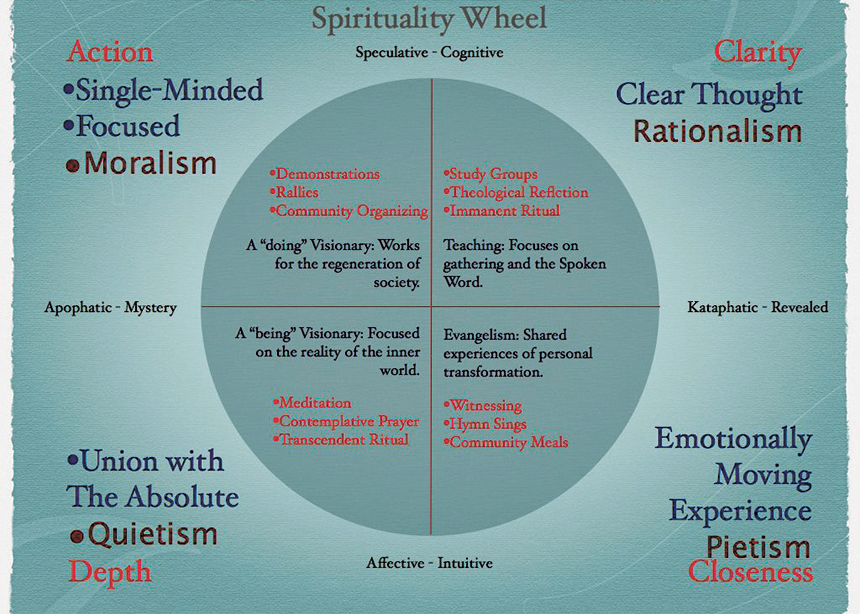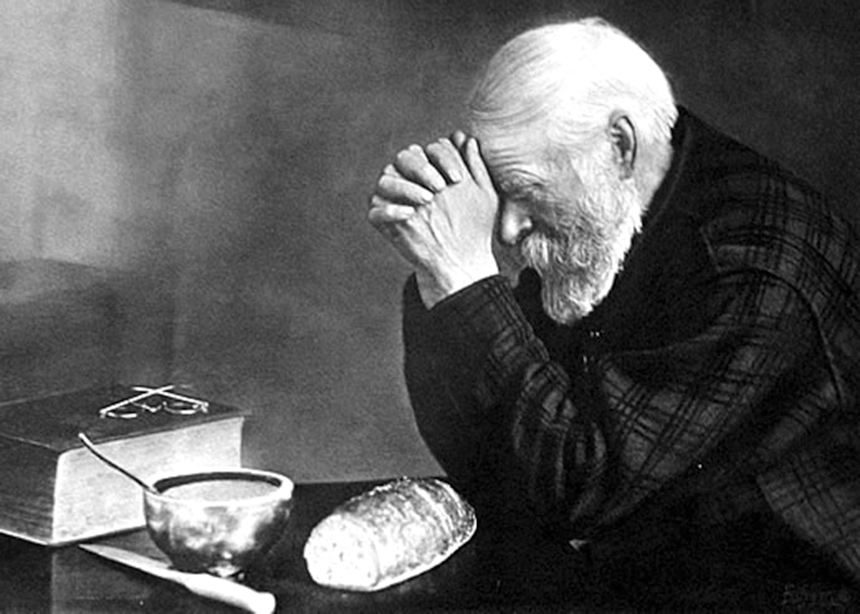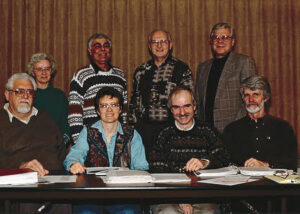“You . . . were marked with the seal of the promised Holy Spirit; this is the pledge of our inheritance toward redemption as God’s own people” (Ephesians 1:13-14, NRSV).
I understand spirituality to be our knowledge and experience of God active in our lives. But I hear little in our congregations about how we have that knowledge or experience of God. Most of us would not identify with the words from Ephesians that the Holy Spirit is a pledge, a proof of God in our lives, in our experience of God at work in our lives or world.
I don’t doubt that many in our congregations and in our families outside the church have knowledge and experience with God. Dawn Ruth Nelson, in A Mennonite Woman: Exploring Spiritual Life and Identity, makes the point that in her own life, having moved in two generations from a tight-knit, multi-generational focus on church at the centre of life, when she really needed knowledge and experience of God in her life, it was not there. She had depended on her community to give it to her, but when her community ended acrimoniously when she was on a mission assignment in Northern Ireland, she had no support for her faith. She had not learned how to be in relationship with God on her own.
This sounds very individualistic, unlike traditional Mennonite spirituality, but it is the reality for many modern, urban, acculturated Mennonites, and most others in our society.
“Now after John was arrested, Jesus came to Galilee, proclaiming the good news of God, and saying, ‘The time is fulfilled, and the kingdom of God has come near; repent, and believe in the good news’ ”
(Mark 1:14-15, NRSV).
Jesus came preaching good news. We often use the word “gospel” from a combination of the Old English words gōd and spel—good story or news. This is a direct translation from the Greek euangelion, meaning a good or great message. Jesus’ message after his 40 days of communing with God in the desert was to be good news. The message was that the time is fulfilled, God’s kingdom has come near, or is at hand.
God’s kingdom can have many meanings, but one of the key meanings is that of the rule of God, the interest of God in human activity. The kingdom of God drawing near is God drawing near to humanity. One of the key ways this was true was that God was drawing near in Jesus himself. That is the good news—God is showing interest in humanity, in being in relationship with humanity.
Jesus then suggests a response: Repent and believe this good news. The word “repent” is the Greek word metanoéo, meaning to change one’s mind. And to believe is pisteúo, which means to believe, in the sense of putting one’s trust in someone or something.
Jesus came with good news, that God has drawn near to humanity. The response is to change one’s mind and believe this good news. What was it that humanity was changing its mind from? The sacrificial system suggested that humanity wasn’t good enough to be in relationship with God, and Jesus came to end that separation. In Jesus, alive and among the people as a person, God had drawn near. People needed to change their minds about the separation between themselves and God, and put their trust in Jesus and his message.
This relationship with God is expressed in many ways by many Christians—anywhere from “knowing Jesus” or “having Jesus in your heart,” to “a sense of the divine,” or even, as Bruce Cockburn sings, “In front of all this beauty, understanding nothing.”
In each case they are talking about putting their trust in Jesus’ message that God has drawn near to humanity in love in order to be in relationship with human beings. People are changing their minds from the need for a blood sacrifice to be made over and over again, or perhaps they are changing their minds from the idea that either there is no God or that God isn’t interested in humanity. Jesus came to help people to be in relationship with God.

A number of years ago I was part of a group of pastors and other church leaders who were led in a study of Corinne Ware’s work in types of spiritual expression. She created a wheel that gives four major kinds of spirituality. Starting on the top right are people who are interested in theology and study; a good sermon, book, lecture or discussion fulfills their need for relationship with God. On the bottom right are those who are interested in emotional experiences with God, thinking about God as shepherd, friend, helper and lover; worship with deeply emotional songs, readings and practices fulfill their need for relationship with God. On the bottom left are the contemplatives; they are moved by silence, solitude, inward searching, and listening for the small, still voice of God. On the upper left are those who are activist-oriented in some way; for them, faith means doing something—anything from painting the church, sewing quilts, going door to door in the neighbourhood or walking in a peace march; they experience God when they do something, a sense of a job well done and God’s pleasure.
What our group discovered is that each of us had preferences around Ware’s spirituality wheel. As leaders, we were tempted to believe that our preference was the right way to practise spirituality and experience God. But there were other valid practices and experiences. To lead well we needed to both validate others’ practices and experiences, and create opportunities for a variety of practices and experiences in our congregations. We also discovered that no one is completely satisfied in one quadrant. All of us “leaked” over into other quadrants, sometimes at different points in our lives, and sometimes depending on our present life situation.
I believe that the key thing we need to be thinking about in our faith communities is how we can be actively teaching spiritual practices to strengthen the experience of God in people of all ages, in order to underpin our community, worship, evangelism, missions, and peace and justice work. I believe that we need to be doing this, first and always, along with all the other good things we do and teach.
We have good news, that there is a God, and that God is interested in us and in being in relationship with us. This God is interested in how we see ourselves, and in how we relate to each other and to the creation around us. God wants only good for each and every person, and the whole creation. God wants to be relating to us and growing us.
As Leighton Ford of the Billy Graham organization said, “God loves us exactly as we are. And God loves us too much to leave us as we are,” in our pain, sadness and diverse difficulties. We grow as we relate to God who comes to us in love.
The prophets who wrote, compiled and edited the Deuteronomic material in the Old Testament knew this:
“Hear, O Israel: The Lord is our God, the Lord alone. You shall love the Lord your God with all your heart, and with all your soul, and with all your might. Keep these words that I am commanding you today in your heart. Recite them to your children and talk about them when you are at home and when you are away, when you lie down and when you rise. Bind them as a sign on your hand, fix them as an emblem on your forehead, and write them on the doorposts of your house and on your gates” (Deuteronomy 6:4-9, NRSV).
We teach about relationship with God in every part and stage of life:
- We teach bedtime and mealtime prayers to children and practise them ourselves; we pray before we leave on a trip, long or short; we teach rote prayers and how to pray extemporaneously.
- We teach about how God loves each and every person, creature and thing each day, both by word and by example: Go and do work that helps others and give money openly for such work.
- We teach about the fruits of the Spirit by practising the them when we walk, drive, discuss politics and meet others who are like us and are different from us.
- We teach simple contemplation/listening/mindfulness in church, at home, on holiday, during the work week, in Sunday school, in the seniors home, and everywhere in between.
- We leave room for listening in silence in worship services.
- We encourage the sharing of “God moments” in worship, at home, and at board and committee meetings.
- We teach and practise lectio divina (contemplating a scripture passage) and visio divina (contemplating a scene or photo).
We remember the prophet Elijah. His spirituality was one of action and of speaking God’s message with emotion and intellect. But there came time when God called him to inaction, silence and peaceful contemplation:
“[God] said, ‘Go out and stand on the mountain before the Lord, for the Lord is about to pass by.’ Now there was a great wind, so strong that it was splitting mountains and breaking rocks in pieces before the Lord, but the Lord was not in the wind; and after the wind an earthquake, but the Lord was not in the earthquake; and after the earthquake a fire, but the Lord was not in the fire; and after the fire, a sound of sheer silence. When Elijah heard it, he wrapped his face in his mantle and went out and stood at the entrance of the cave. Then there came a voice to him that said, ‘What are you doing here, Elijah?’ ”
(I Kings 19:11-13, NRSV).
May each of us focus on hearing God in our life, no matter our theological leanings, worship style or chosen form of mission. Let us listen for the God who loves us each more than we love ourselves.
See also:
Nurturing spirituality
Experiencing God
Solitude and community
For discussion
1. Contemplate the feature article: A. Make yourself comfortable, placing your hands turned up in your lap and close your eyes. B. Take five normal breaths. C. Imagine a favourite place of yours to relax in. D. Imagine God coming and being with you there. E. Sit quietly with God, waiting for God to speak. F. Think about whatever arises in your mind and heart and share that with God, or think about the article. G. What emotions or thoughts arise in you? Share those with God. H. Sit in thanksgiving that God has drawn near.
2. What would you add in terms of spiritual practices: other places, times, forms?
3. Dave Rogalsky suggests that our focus should be “first and always” on helping people in our congregations grow in relationship with God. What do you think?
4. A copy of Corinne Ware’s spirituality wheel appears on page 5. Which of the four would be your preferred way to experience God? Where and when do you experience God? How do you respond to God?
5. Rogalsky suggests that Mennonites no longer have a tight-knit community to provide spirituality and that we need tools to build our own. Do you agree? In what ways does your congregation help you carry your spirituality?
—By Dave Rogalsky and Barb Draper










Leave a Reply
You must be logged in to post a comment.